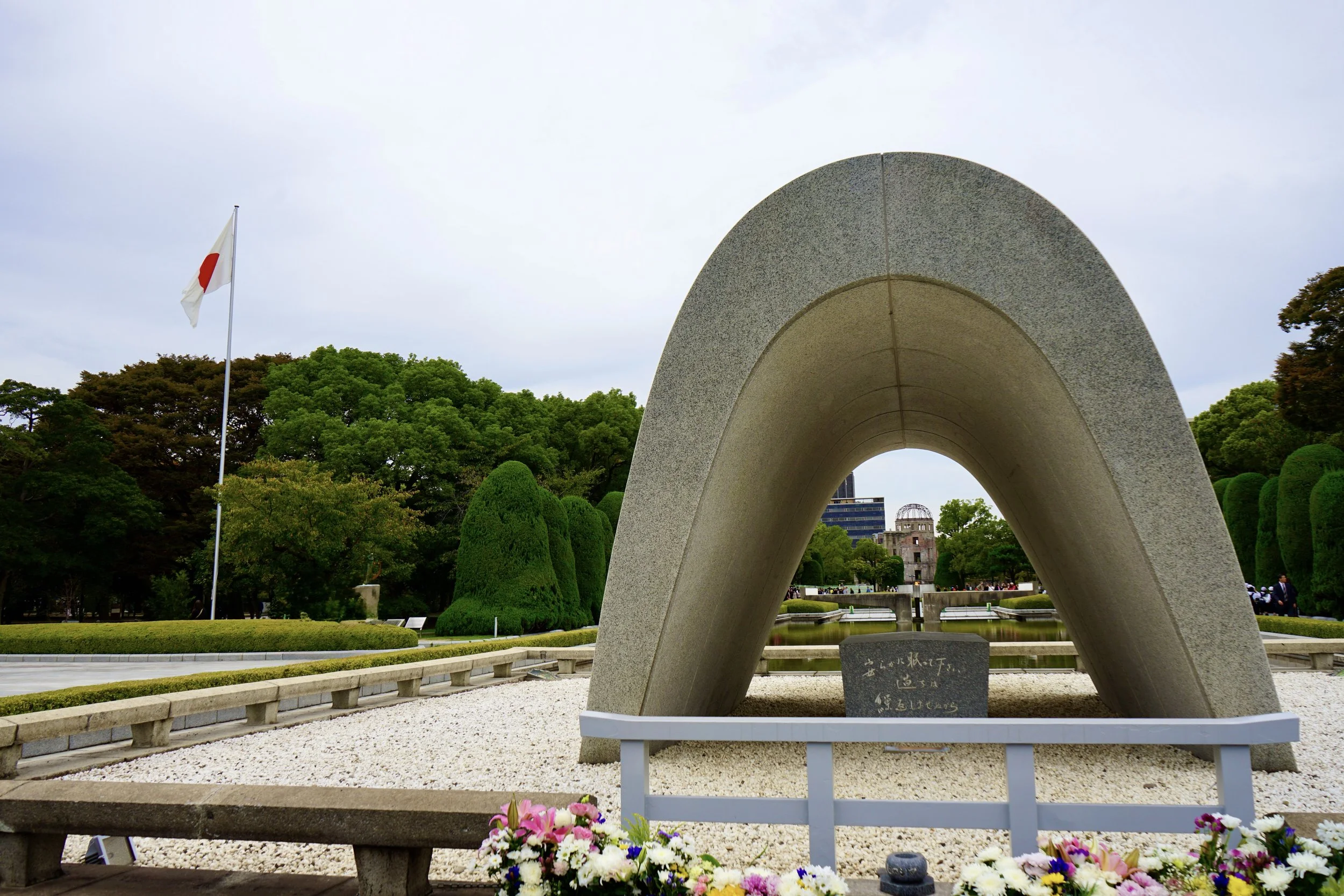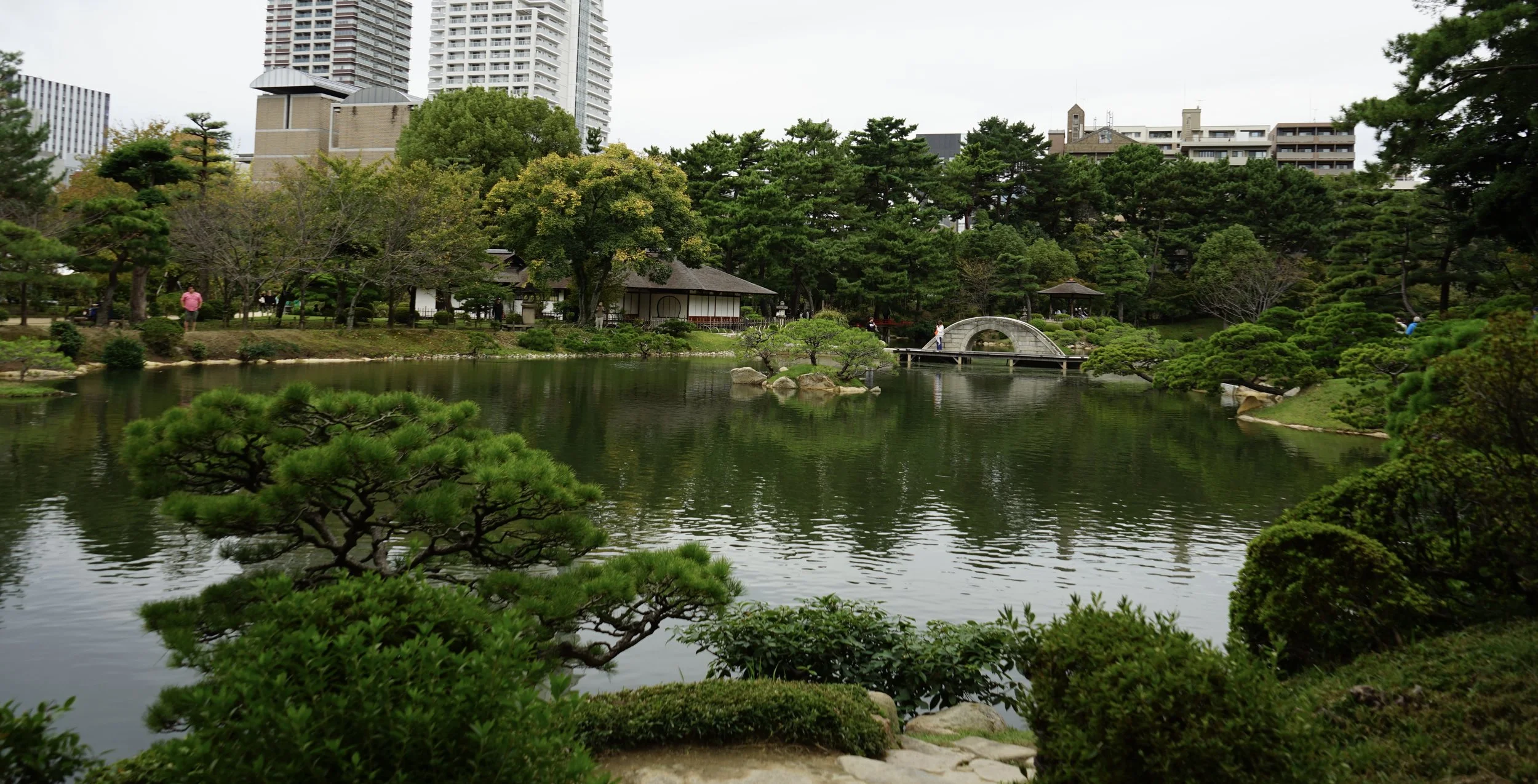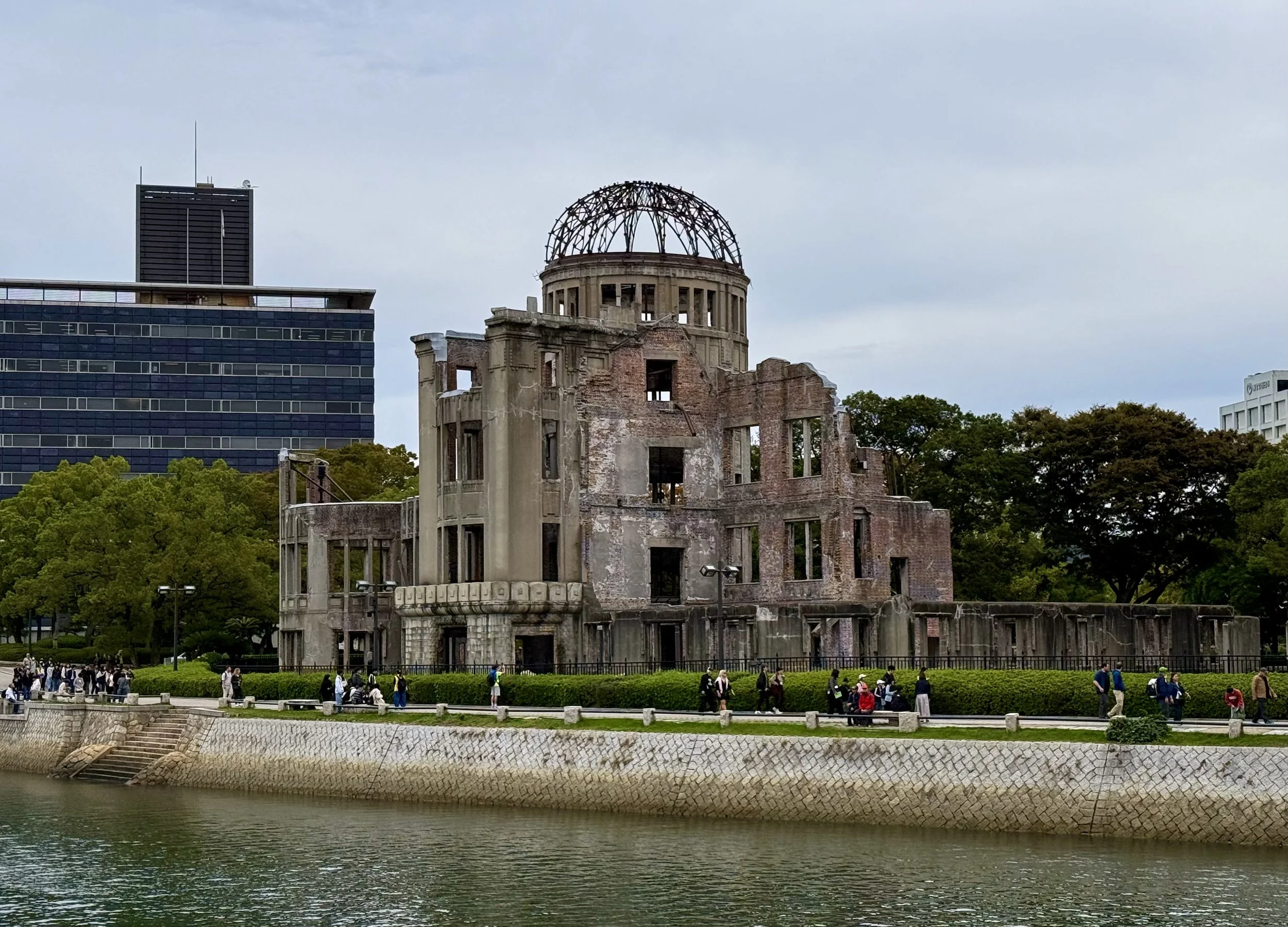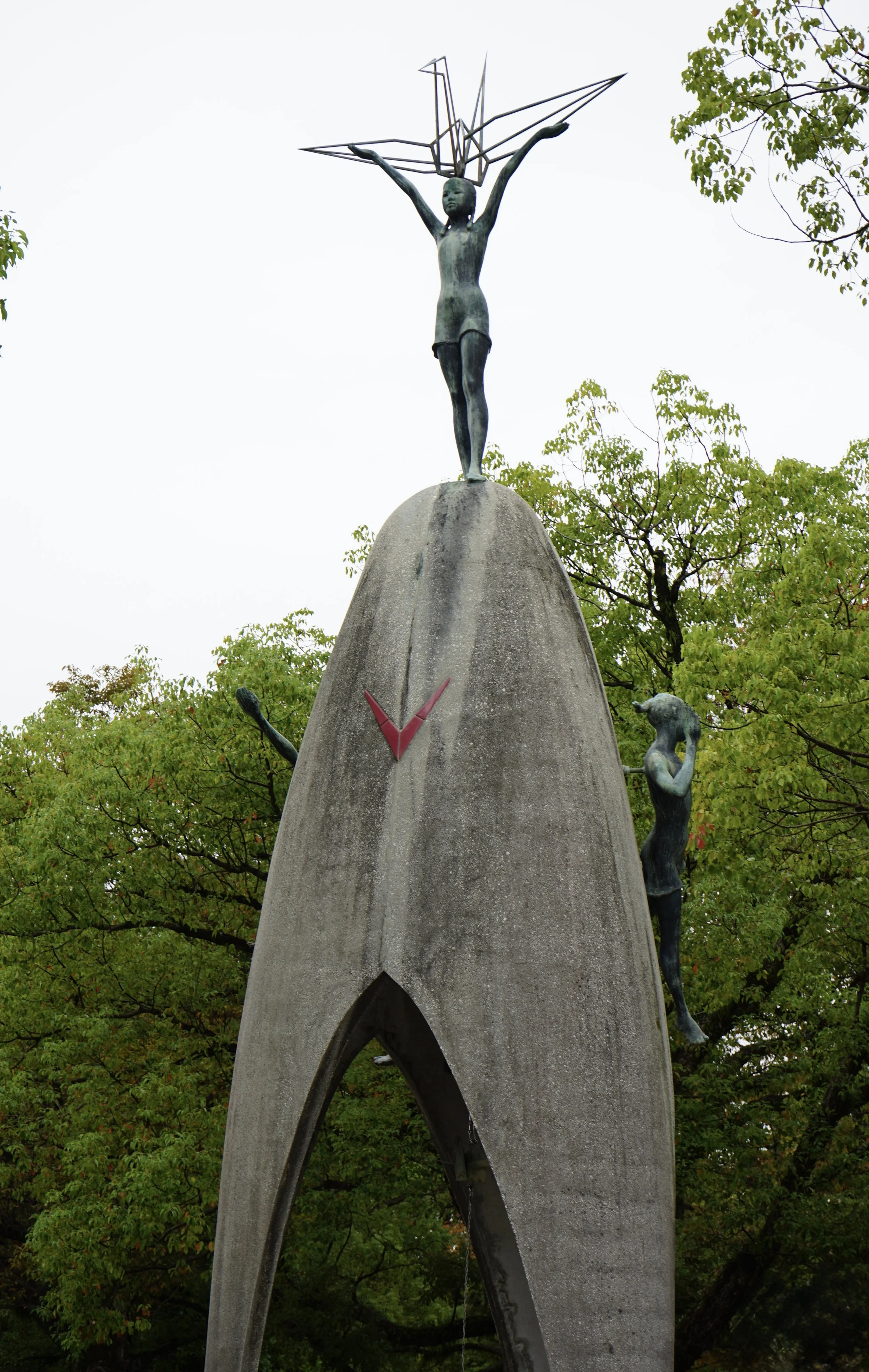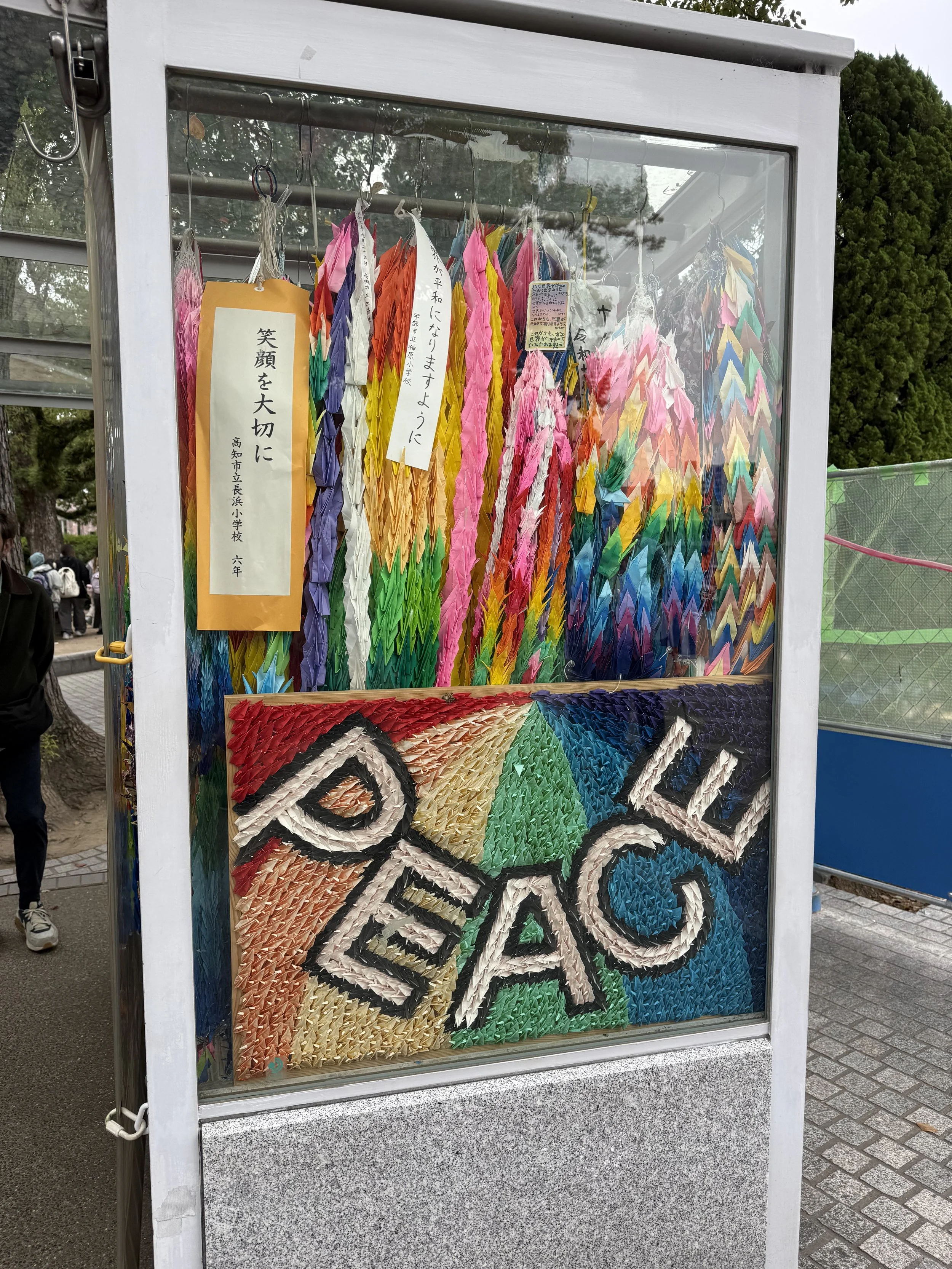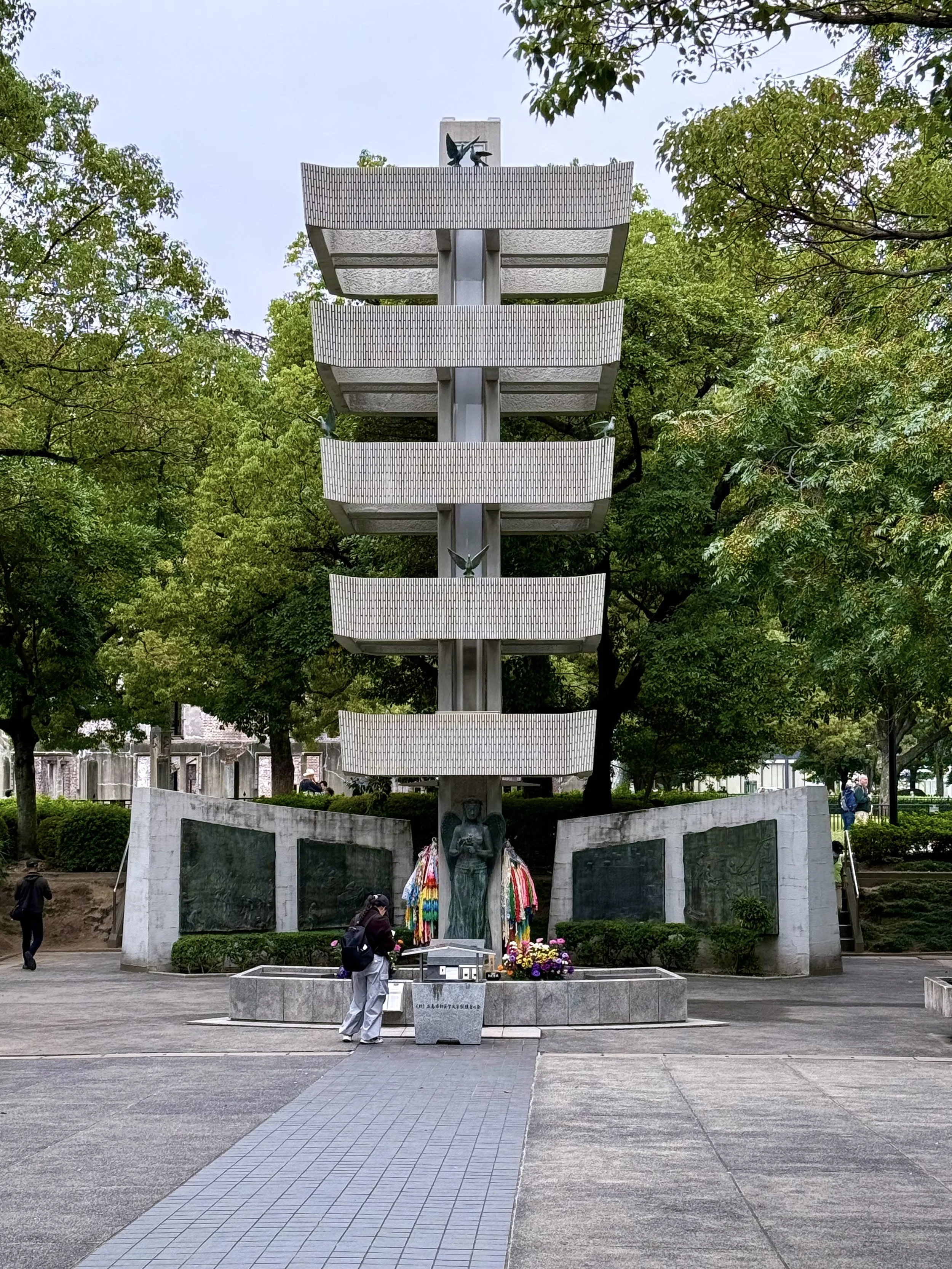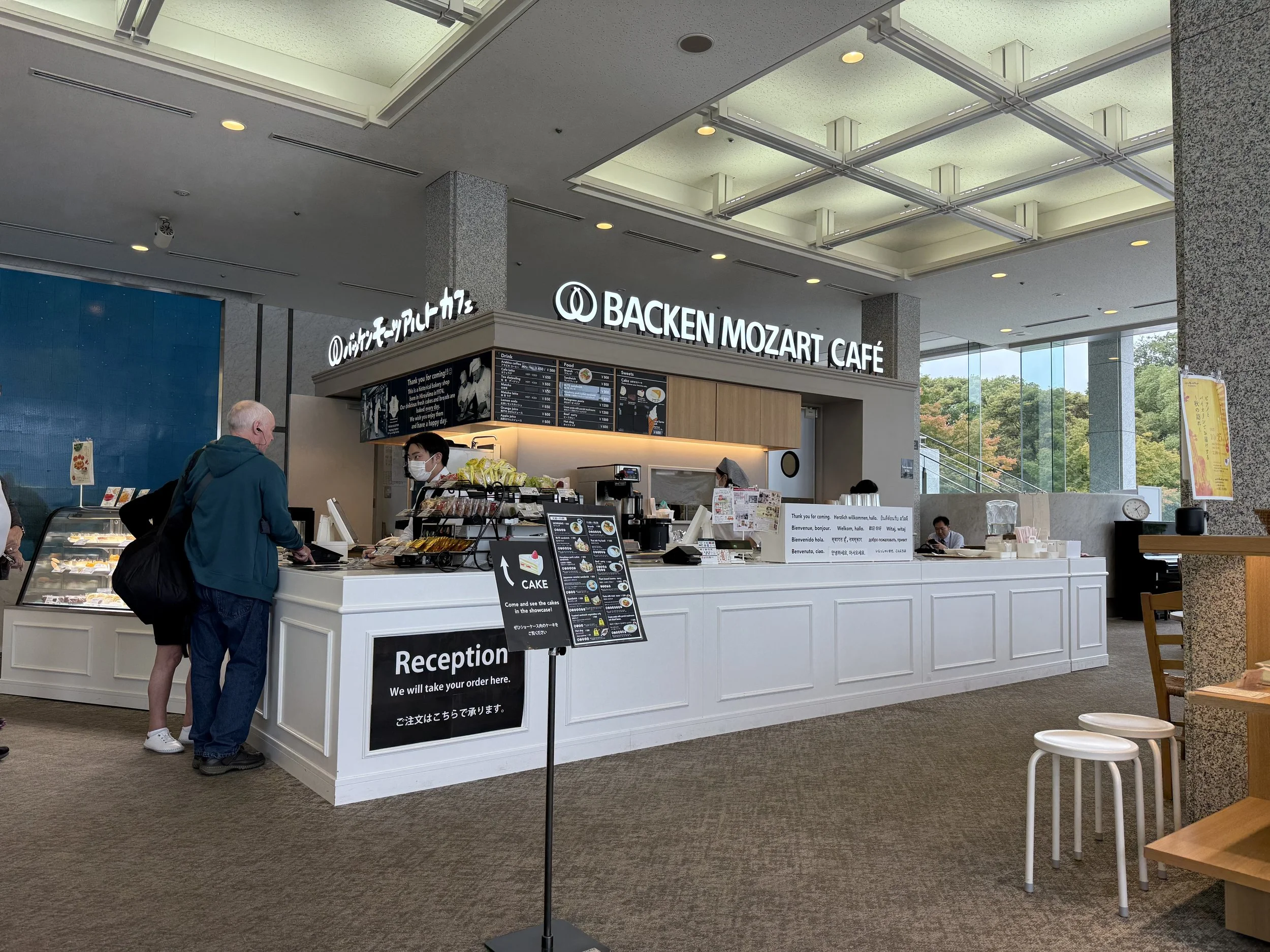Hiroshima, Japan
We arrived at the port of Hiroshima early in the morning. To look at the city now, you would never know the atrocity that once happened here. This city really needs no introduction. It is known worldwide as the place where the United States dropped the first atomic bomb. Hiroshima today looks and feels like any other modern Japanese city, with orderly streets, trams gliding by, and people going about their day, but the awareness of what happened here never leaves the backdrop.
I booked a guided tour that took us to several of the city’s most significant sites.
Shukkeien Garden
Our first stop was Shukkeien Garden, a calm pocket of green originally built in 1620 for a feudal lord. The name means “shrunken view garden,” designed to represent miniature landscapes of mountains, valleys, and lakes. The paths curve around ponds and through clusters of trees, crossing a series of narrow bridges made of both wood and stone. The most striking of them is the graceful Rainbow Bridge, which arcs over the central pond and connects several of the garden’s small islands. Pines are carefully shaped, koi swim lazily beneath the bridges, and small tea houses sit tucked into quiet corners. It is hard to believe this same garden was completely destroyed by the atomic blast and later rebuilt, tree by tree. Today it feels timeless again, though its history adds a quiet gravity to its beauty.
Peace Memorial Park
From there we made our way to Peace Memorial Park, a vast space filled with monuments dedicated to those who lost their lives in the bombing. The park’s centerpiece is the Atomic Bomb Dome, once the Hiroshima Prefectural Industrial Promotion Hall. The bomb detonated almost directly above it, and somehow its skeletal frame survived. It stands preserved as it looked on August 6, 1945, a haunting reminder of destruction and resilience.
Atomic Dome
Within the park are several memorials, each honoring different groups affected by the bombing. The Children’s Peace Monument stands at the center of an open plaza. It was inspired by Sadako Sasaki, a young girl who developed leukemia after radiation exposure and began folding paper cranes in hope of recovery. According to Japanese legend, anyone who folds one thousand cranes is granted a wish. Sadako hoped that by reaching a thousand, she might be healed. She continued folding even as her strength faded, using any paper she could find, including medicine wrappers. Though she passed away before completing her goal, her classmates finished the remaining cranes in her memory. Her story spread far beyond Japan and became a global symbol of peace and perseverance.
Surrounding her statue are glass cases filled with thousands of colorful paper cranes sent from around the world each year. Some come from schoolchildren, others from travelers moved by her story, each one a small but powerful offering of remembrance.
Thousands of paper crane
A short walk away is the Memorial Tower to the Mobilized Students, built to remember the more than 6,000 students who were conscripted to work in factories and construction during the war and lost their lives in the bombing. The tower’s layered concrete design rises toward the sky, with bronze figures and reliefs depicting the students’ sacrifice.
At the center of the park lies the Cenotaph for the A-Bomb Victims, an arched monument that shelters a stone chest containing the names of all who died, along with the inscription: “Let all the souls here rest in peace, for we shall not repeat the evil.” Across the reflecting pool burns the Flame of Peace, which will remain lit until nuclear weapons are eliminated. Nearby stands the Peace Bell, which visitors are invited to ring, its resonant tone carrying across the park. Together, these monuments form a quiet but powerful statement about remembrance and renewal.
We ended our visit at the Hiroshima Peace Memorial Museum, located within the park. The museum is housed in a long, low concrete building raised on pillars, designed by architect Kenzo Tange in the 1950s. Its clean, minimalist lines overlook the park’s reflecting pool and the Atomic Bomb Dome beyond it. Inside, the exhibits are direct and difficult, with photographs, survivor accounts, and personal belongings of victims. There is no dramatization, only truth. The smallest items, like a child’s burned school uniform, a tricycle, and a watch stopped at 8:15, serve as sad reminders of what was lost. It is a place that encourages quiet reflection.
The museum, however, was packed. Our guide had warned us it would be busy, but nothing prepared me for the crowds, hundreds of schoolchildren and tourists moving shoulder to shoulder through the galleries. It felt overwhelming, and after only a short time inside, I stepped out. Attached to the same building is a small café called Backen Mozart Café, where I spent the rest of my visit. I had brunch and a slice of Japanese cheesecake before heading back to the bus. The guide later handed out small flower-shaped cakes filled with custard and red bean paste, a sweet end to an emotionally heavy morning.
Hiroshima is often described as a city reborn, but being there, it is clear it is more than that. It is a city that remembers without being defined by its tragedy. Life continues, children play by the river, trams clang down the streets, and that normalcy might be the most powerful memorial of all.
Other Things to Do in Hiroshima
Hiroshima Castle – Also known as Carp Castle, this reconstructed fortress once served as the seat of local feudal lords before it was destroyed in 1945. The current wooden reconstruction houses a museum with displays on Hiroshima’s samurai history and architecture. The castle grounds are especially scenic in spring when the cherry blossoms bloom. Official site
Hondori Shopping Street – A covered pedestrian arcade lined with local shops, cafés, and restaurants that stretches through the heart of the city. It’s a good place to pick up souvenirs or try Hiroshima-style okonomiyaki, a savory pancake layered with cabbage, noodles, and seafood.
Miyajima Island – A short ferry ride from the city, this island is famous for the floating Itsukushima Shrine and its bright red torii gate that appears to rise from the sea at high tide. The island is also home to friendly deer, scenic hiking trails, and quiet temples.
Hiroshima Museum of Art – Located near the castle, this museum features European masters like Monet and Van Gogh alongside Japanese modern art. The building itself is calm and airy, a good stop for anyone who needs a lighter contrast after visiting the Peace Memorial Museum. Museum site
Okonomimura – A multi-floor food complex where each stall specializes in a slightly different version of Hiroshima’s signature dish, okonomiyaki. It’s lively, casual, and perfect for a quick meal before returning to the port or train station. Details

